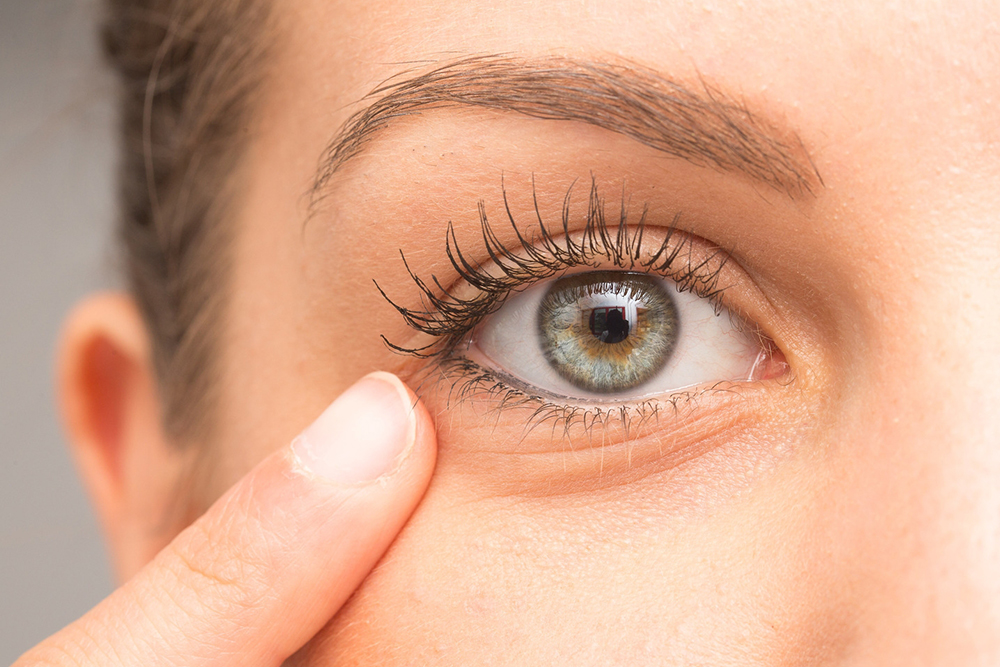Eye Twitching – Types, Causes, and Remedies
An eyelid twitch or contraction occurs when eyelid muscles start to spasm repetitively and involuntarily. Eyelid twitches are quite common, and there are various reasons that can cause them, including lack of sleep, eye strain, or eye irritation. At such times, the condition goes away on its own. That said, persistent or severe eye twitching can be a cause for concern, as it may be triggered by an underlying health condition.

Types of eyelid twitches
It is necessary to understand what type of twitching is occurring to find the right treatment for eye twitching. The categorization is based on the severity, frequency, and underlying causes of the twitches. Eyelid twitches are classified into three types based on frequency, severity, and underlying causes.
- Myokymia
Eyelid twitches that involve sudden sporadic eyelid spasms are known as myokymia, which generally affect the lower eyelid. They are quite benign and rarely indicate a serious problem. Usually, they feel like mild and gentle tugs, and occasionally, spasms might cause the upper and lower lids to close up temporarily. Myokymia is typically caused by environmental factors and tends to disappear with enough rest. That said, if these twitches persist for longer periods, it is important to consult a healthcare professional and get a diagnosis. - Benign essential blepharospasm
This is a condition that causes sustained and chronic spasms of the eyelids. It is a type of dystonia or movement disorder that affects the eyes. In most cases, this condition becomes apparent when a person is between 50 and 70 years. Generally, it worsens over time, causing blurred vision, facial spasms, and high sensitivity to light. - Hemifacial spasm
Eyelid twitches that occur in only one eye are categorized as hemifacial spasms. They are a type of neuromuscular disorder that develops when a blood vessel puts too much pressure on one of the facial nerves. Generally, this starts with episodic twitching, and over time, it progresses to the affected eye shutting involuntarily and the mouth pulling toward one side. Eventually, the spasms start to affect every muscle on one side of the face.
Eyelid twitch causes
Eyelid twitches can occur because of various causes ranging from something as mundane as eye strain to something complex as underlying health issues like multiple sclerosis. There are some common reasons why eyelid twitches occur.
- Lack of sleep or fatigue
- Chronic stress
- Excessive exercise
- Too much caffeine intake
Besides these, there are other triggers as well that cause eyelid twitching.
- Eye irritation or strain
- Corneal abrasion
- Dry eyes
- Environmental irritants like air pollution, wind, and bright lights
- Multiple sclerosis
- Light sensitivity
- Uveitis of swelling of the middle layer of the eye
- Blepharitis or inflammation of the eyelid
- Pink eye or conjunctivitis
- Migraine episodes
Remedies for eye twitching
When eye twitches start, one can generally follow some measures that alleviate the strain on the eyes. But if the twitching continues for more than a few days, it is important to consult an ophthalmologist to determine the underlying cause. Along with treatment options prescribed by them, one can also follow certain remedies to cure eye twitching.
- Get enough sleep
Often, a lack of sleep is a common cause of eye twitching. In such situations, getting enough sleep is the fastest way to stop eye twitching. This involves improving the quality and quantity of sleep. Adults should generally get a minimum of about seven to eight hours of sleep, and following a consistent sleep schedule is the most effective way to get enough sleep. This means going to bed and waking up at the same time every day, including weekends. Avoiding large meals and caffeinated beverages before sleeping can also help improve sleep quality. - Take breaks when using gadgets
Excessive use of screens can strain the eyes and cause dryness. This can increase the frequency of eye twitching because of computer vision syndrome, which causes a person to experience digital eye strain. Symptoms typically include blurred vision, dry eyes, eye strain, headaches, and pain in the neck and shoulder. To prevent this, follow the 20-20-20 rule, which involves taking a break from screen usage every 20 minutes. During this break, make sure to look at any random object that is 20 feet away for at least 20 seconds. Doing this can help the eyes relax and stop twitching. - Use warm compresses
A warm compress is one of the most effective twitching remedies. Since eye twitches are small muscle spasms or contractions, applying a compress can help to soothe them. For this, take a clean washcloth and dip it in warm water. Squeeze out the excess water and hold the cloth on the affected eye for a few minutes. Repeat this a couple of times during the day to get relief from eye twitches. - Reduce stress levels
Myokymia-type eye twitches are often associated with high levels of stress. So, it can be helpful to take measures that lower stress levels daily. One can achieve this by setting aside some time each day for relaxation. Additionally, one can engage in hobbies and activities that provide stress relief. In such situations, learning techniques to manage stress, such as breathing exercises and following mindfulness, can also help. - Stay hydrated
Sometimes, eye twitching occurs because of dehydration, so staying hydrated can be helpful in getting relief. This involves drinking enough water and fluids that contain electrolytes. These include coconut water, milk, smoothies, bone broth, and soups. All of these can help to maintain proper hydration levels.











